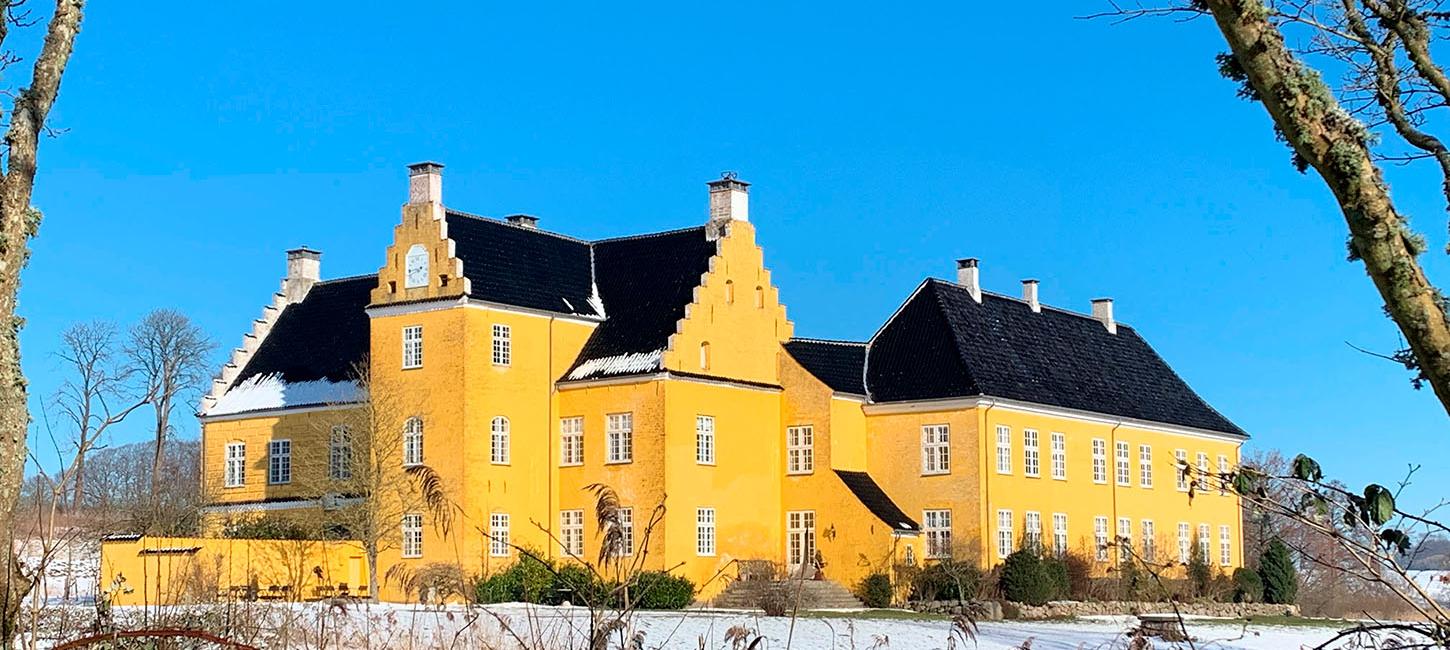
Following the footsteps of H.C. Andersen at Lykkesholm Castle
Lykkesholm was among H.C. Andersen's most beloved residences in Funen.
Lykkesholm Castle
Over a ten-year period from 1832 to 1842, he made numerous summer visits here, most frequently and for the longest periods with the cheerful widow, Justitsrådinde Johanne Marie Lindegaard, until her death in 1839. In July 1832, the poet writes to his friend Henriette Wulff that the following day (July 17th) he would make his first trip to the manor, where the surroundings "are said to resemble Switzerland".
Here at Lykkesholm, which H.C. Andersen described as "the most beautiful place I know in Funen", the poet thrived:
Both because of the great hospitality and admiration he received here, but also because of the beautiful surroundings, the combination of social life and peace to work - and last but not least, the good food! In the letters from Lykkesholm, there is one mention after another of the delicious food and drinks. Here is just one example from a letter to his friend Edvard Collin on July 3rd, 1836:
"You ask me what kind of pudding we had at Lykkesholm, the answer is Marble Pudding. However, I shall describe to you what we had yesterday all day, so you can imagine the way of life. First tea with lovely grass butter on the bread; then coffee with a cream that was something. That was at 8 o'clock; but at 10 o'clock we had roast chicken and asparagus, as well as port wine. At 2 1/2 o'clock meat soup with delicate fish balls. Roast; Melon; Goat. Hens and strawberries, then coffee. At 8 o'clock tea with Christmas cake and the lovely butter and at 10 o'clock open sandwiches with all sorts and hot (fried) perch. In addition, as at the midday table, red or white wine."
Lykkesholm and its social scene
At Lykkesholm, H.C. Andersen enjoyed the social life. The hospitable host family knew how to make the summer days a celebration for the poet and for a number of other guests. In 1836, for example, the Danish composer Holger Simon Paulli (1810-1891) and the actor Christen Martin Foersom (1797-1850) were among the visitors to the manor. In the festive company, Andersen's poem "The Rosebud" was created, and Paulli set the poem to music. However, the poet had a somewhat more strained relationship with the actor Foersom, as can be seen from a letter to Edvard Colling from July 19:
"Meanwhile, we had many guests at Lykkesholm and one of those who stayed was the actor Foersom. He is good-natured, but very crude! Imagine! At the dinner table where there were probably 40 people and half of them ladies, he suddenly made a figure with a handkerchief and his fingers, which represented someone with bare thighs and presented it. The only comical thing was that one of the ladies, who did not see well, took out her lorgnette to see what it actually was. One morning I come into my room and there Foersom is standing quite calmly and using my toothbrush. 'Don't worry,' I said, 'but why on earth do you use someone else's toothbrush?' 'Oh,' he replies, 'I don't give a damn about that, you're not ill!' - When he was gone, my good toothbrush immediately went out the window, I wouldn't have it in my mouth."
ykkesholm and its influence on H.C. Andersen's writing
The romantic setting of Lykkesholm and the beautiful surrounding nature had a strong inspiring effect on the poet's poetic mind.
In the novel O.T. from 1836, the manor house is described - we have Andersen's own word for it:
— "Dear Friend! Now I am at the manor where I let my Otto Thostrup find his Louise; as for my heart, you can be calm, it has no one and will have no one, for that I am too sensible", he wrote to Edvard Collin from Lykkesholm in June 1836, during the stay where he also began his third novel Only a Fiddler (1837).
In H.C. Andersen's letters from Lykkesholm, one can read how the manor's historical atmosphere, the many portraits and the pasted paper cuttings on the site also helped to set the poet's imagination in motion. The fruitful combination of pampering, inspiration and peace to work resulted in H.C. Andersen writing or working on a number of his works at Lykkesholm:
The poem "The Rosebud" (1836)
The novel O.T. (1836)
The fairy tale "The Little Mermaid" (1837)
The novel Only a Fiddler (1837)
The poem "We are a people, we are called Scandinavians" (1839)